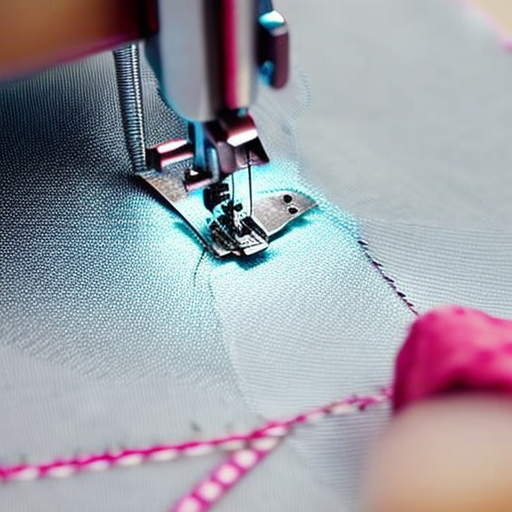
Using a sewing machine is a convenient way to stitch fabrics with precision and speed. However, sometimes you may encounter an issue where your sewing machine fails to stitch properly. It can be frustrating, but fear not – here are some common reasons why your sewing machine may not be stitching and the possible solutions to fix the problem.
1. Incorrectly Threaded Machine
One of the primary reasons for sewing machine stitching issues is incorrect threading. Ensure you follow the manufacturer’s instructions while threading the machine. Re-threading correctly can often solve the problem. Also, check if the thread is properly seated in the tension disks.
2. Tangled or Incorrectly Wound Bobbin
If your machine uses a bobbin, check if it is correctly wound and free from any tangles. Improperly wound bobbins can cause the thread to loop or tangle, resulting in stitching problems. Make sure the bobbin is placed in the bobbin case correctly and the thread is pulled through the tension spring for smooth stitching.
3. Incorrect Needle or Bent Needle
Using the wrong needle for your fabric type or a bent needle can cause stitching problems. Make sure you are using the appropriate needle size and type for your fabric. Replace the needle if it is bent or dull. A damaged needle can lead to skipped stitches or uneven tension.
4. Incorrect Tension Settings
Tension settings play a vital role in achieving proper stitching. If the thread is too tight or too loose, it can affect the stitch quality. Check your machine’s tension settings and adjust them if needed. It’s a good practice to test the tension on a scrap fabric before starting on the actual project.
5. Dirt, Lint, or Jammed Machine
A sewing machine requires regular cleaning and maintenance. Accumulated dust, lint, or thread particles can clog the machine, affecting its performance. Clean the machine regularly, removing any lint or debris. If the machine is jammed, carefully remove the tangled threads and ensure smooth movement of the needle and bobbin mechanisms.
6. Insufficient Presser Foot Pressure
The presser foot applies pressure on the fabric to keep it in place while stitching. If the presser foot pressure is insufficient, the fabric may not feed smoothly, resulting in skipped stitches or uneven stitching. Adjust the presser foot pressure according to your fabric thickness to ensure consistent stitching.
7. Machine Compatibility with Fabric
Not all sewing machines are built to handle all types of fabrics. Some machines may struggle or produce poor stitches when working with heavyweight fabrics or multiple layers. Make sure your machine is compatible with the fabric you are using. For complex projects, you might need to consider investing in a more heavy-duty machine.
By addressing these common issues, you can often resolve stitching problems with your sewing machine. Remember to consult your machine’s user manual for specific troubleshooting tips and techniques. Happy stitching!
Image source: Freepik




